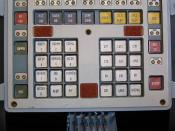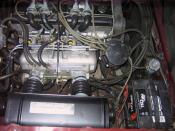IntroductionAn ECU is a micro computer that reads information collected by sensors distributed on the vehicle and uses that information in real time to adjust different processes that are happening in the car, helping the driver and the engine to have better efficiency.
The control of car and race car engines is becoming increasingly more complex with more rigid emission/higher performance standards and constant effort to gain higher fuel efficiency. Twenty years ago, control systems were mechanical (i.e., carburettor, distributor, and breaker contact). Now, microcontroller-based systems control fuel injection and ignition. Since the control strategy for anengine depends strongly on the current operating point (e.g., revolutions, momentum, etc.), linear control models, (e.g., PID) are not suitable. On the other hand, non mathematical models describing the complete behaviourof an engine exists. Most engine controllers use a look-up table to represent the control strategy. The table isgenerated, from the results of extensive testing and engineerÃÂs experience.
The generation of such a look-uptable, however, is only suitable for three dimensions (two inputs and one output). Also, the generation and interpretation of such tables is difficult and considered a black art.
Part AFunction of production car ECU / VCSThe ECU is one of the most important parts in a car, is considered the brain of the vehicle.
Today the production vehicles can almost think, the ECU can analyse the data received by the sensors, and act on it. From the fuel injection, to the ignition timing passing trough the immobilizer, engine speed, throttle position or just the simple lights that gives you information on the dash board, they are all activated by the ÃÂbrainÃÂ and also will depend in which sensors the car have. The complexity of the ECU will depend on the car that weÃÂre talking about, obviously if we buy a low...


